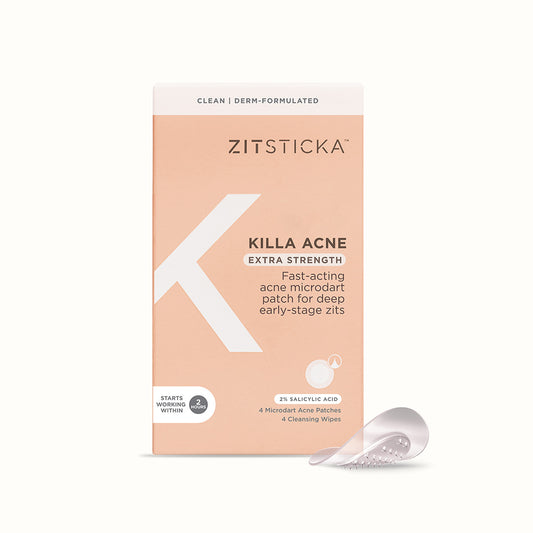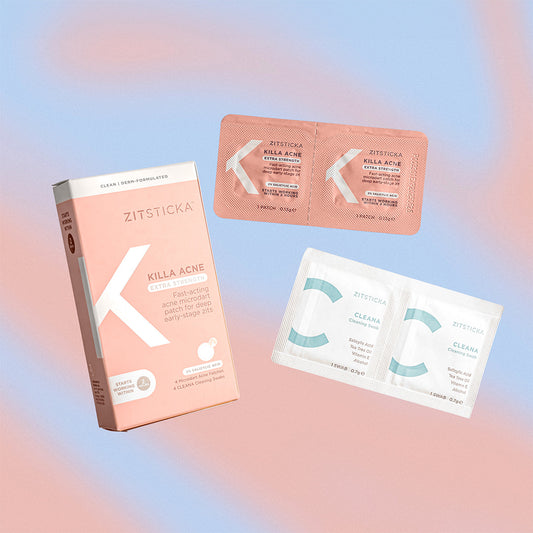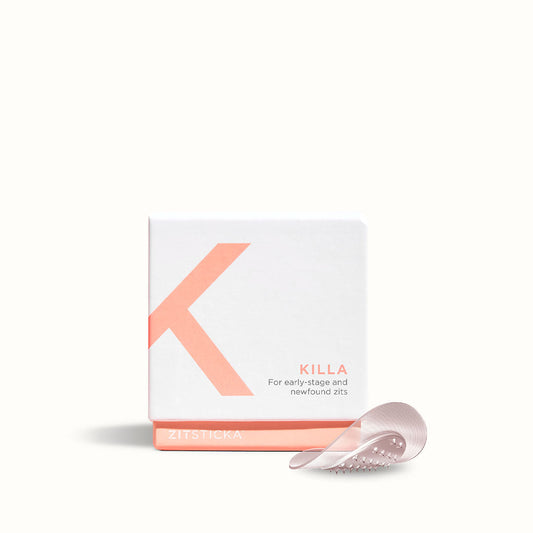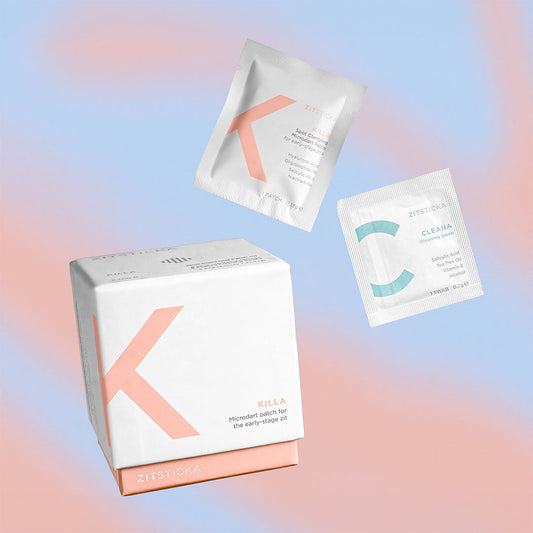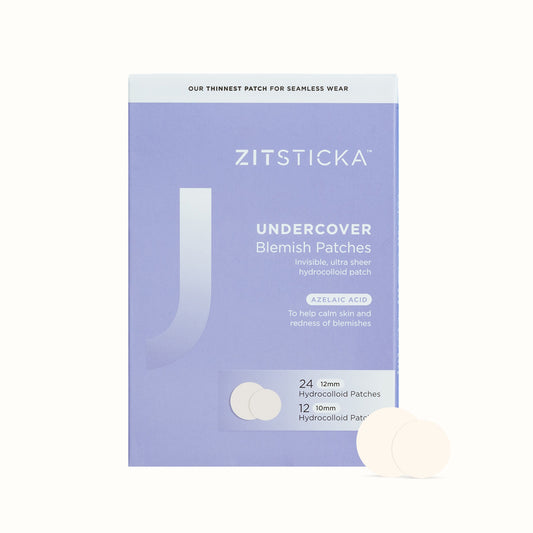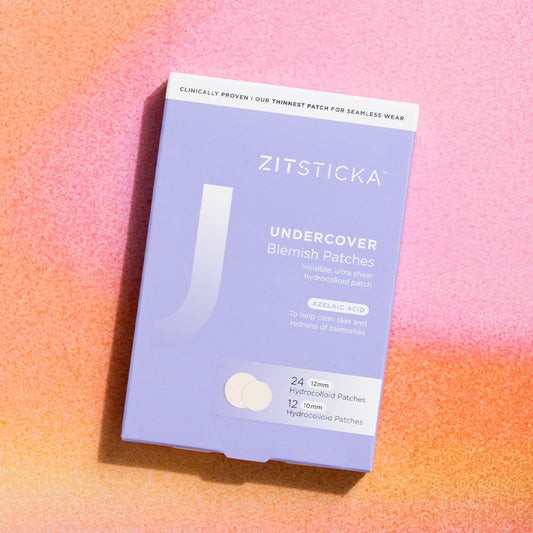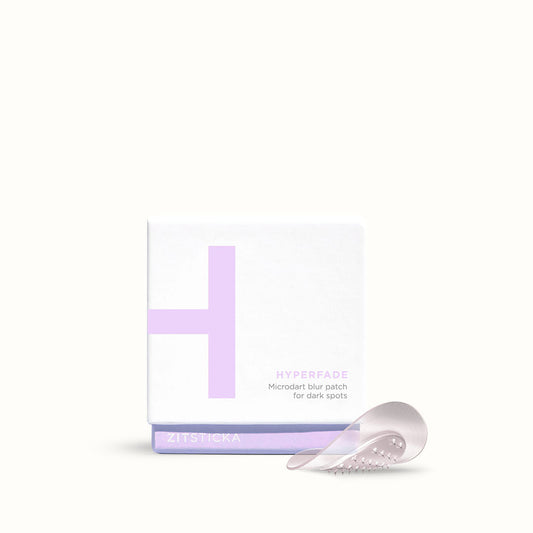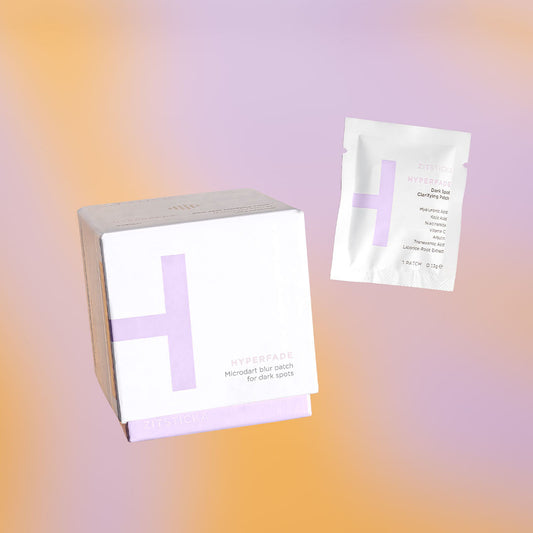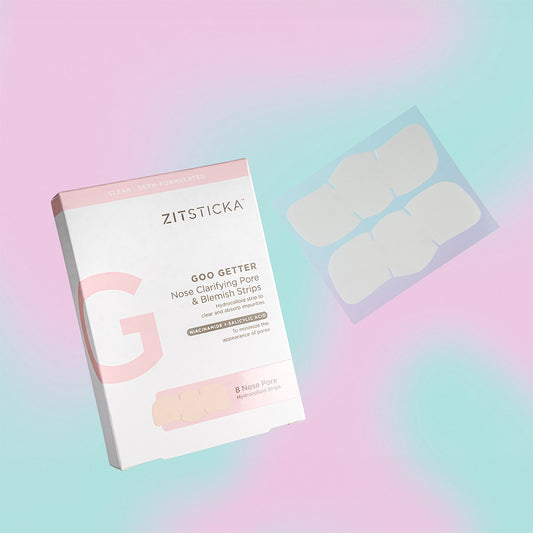On a superficial level, hyperpigmentation and acne scars don’t look to be all that different. And more often than not, people assume they’re the same thing. It’s understandable—they can both be a response to acne, they’re both lingering, and they’re both a headache to address.
But as we talked about in this here article, acne scars and hyperpigmentation are entirely different. Hyperpigmentation is an increased production of melanin, which can exist in a collection of ways. Acne scars are kind of the opposite of that, in that they can exist in a variety of forms, but they all begin the same way.
Below your epidermis—which is your outermost level of skin, most commonly known as, erm, skin—is something known as the dermis. A pretty thick layer that contains some pretty significant things, like hair follicles, sweat glands and nerve endings to name a few. All of your skin is mostly made up of a protein known as “collagen,” which is produced by these cells known as fibroblasts. Now, when any of your skin cells become injured or damaged, these fibroblasts respond by quickly forming new and different collagen fibers. The idea here is to seal the wound as quickly as possible for the sake of your body’s livelihood, and the end result of this process is what we call “scar tissue”. Now sure, the skin is constantly replacing cells at a rapid rate. We all know this. But when it comes to your dermis or any layer of skin that isn’t the epidermis, that process is a lot slower, meaning that despite new cells being formed, that scar collagen remains.
When it comes to acne scars, the process is the same as anywhere else on the body, but for the sake of simplicity, dermatologists have divided them into two groups: elevated scars, which is what a keloid is, and depressed (or atrophic) scars. Atrophic scars are typically what’s referred to as “acne scars” and they exist in a couple of different ways. Boxcar scars, for example, are those broad scars with sharply defined edges. They’re the most common form of acne scar and typically follow inflammatory acne. Rolling scars are a common scar for long-term inflammatory acne, and are those shallow clustered scars that tend to look a bit like a rolling wave. Then you have icepick scars, a narrow but deep scar common with cystic acne that forms when the skin loses collagen, leaving a mark that resembles being poked a bunch of times by a needle or, you know… an ice pick.
It’s vital to note that while different kinds of acne scars look different, their origins are a damaged skin follicle. Hyperpigmentation is more of a surface-level problem: A lingering dark spot as a result of increased melanin (that’s not to say they don’t make us crazy trying to get rid of them). It might not sound like much, but the takeaway here is that hyperpigmentation means your skin and your follicles aren’t been damaged. Instead, it’s some pigment trapped between the layers.
And this is a really important distinction to make because while that dark spot can linger, it’s not forever. It can be fast-forwarded....
Title image: @prettyprogress23

